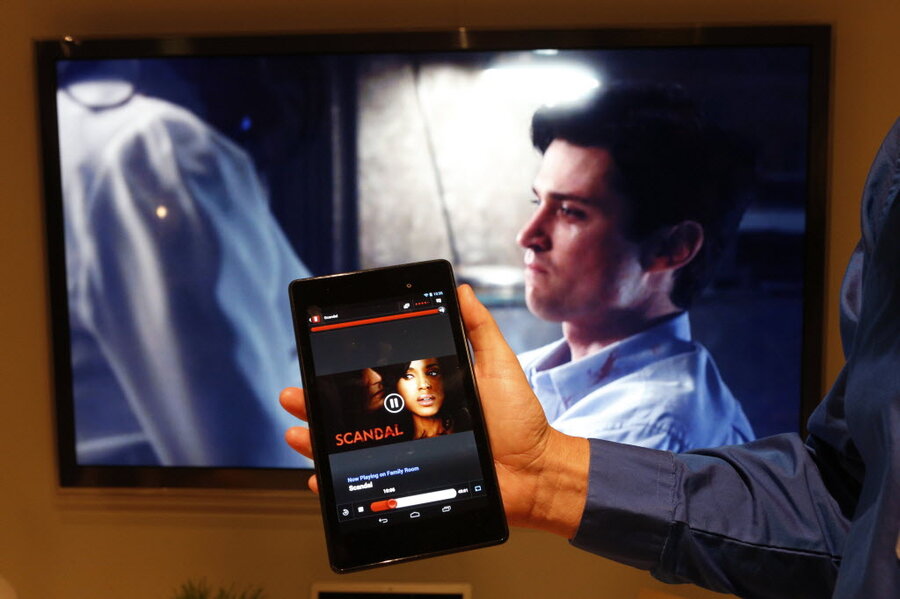Chromecast is Google’s low-cost answer to TV streaming. The whole systems runs off a $35 dongle. Simply plug in the device to your TV and access Chromecast via your wireless network.
How it works: Videos are stored in Google’s Chromecast cloud, and are streamed over the Internet. This means that you can watch a TV show, control it with your Wi-Fi-enabled devices – i.e. cellphone, laptop, or tablet – switch between various potential remotes, and not interrupt your viewing.
Supported Apps: Netflix and YouTube. Pandora is coming soon.
Mirroring: You can only mirror – or sync what is on your computer screen with what is on your television – if you are using Google's Chrome web browser.
Price: $35
Where can you buy one: Online at Google’s Play store, BestBuy.com, or Amazon.com
Compatibility: iOS, Mac OS X, Android, Windows, and Chrome OS
Remote: Your Wi-Fi-enabled devices act as a remote.









